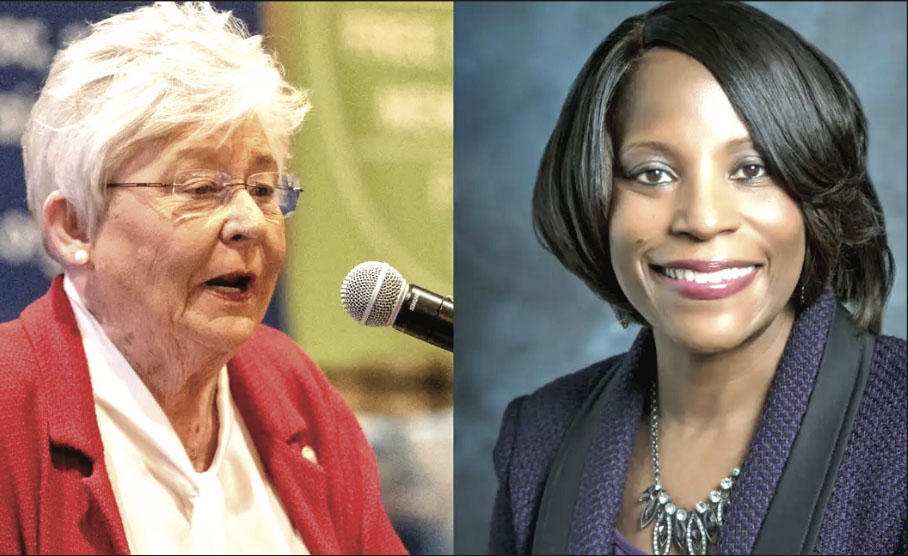Alabama is cutting additional teaching resources that address bias and inequity in preschool and day care settings.
The changes came quickly, spurred by a complaint earlier in April that Rep. Jamie Kiel, R-Russellville, said he received from an Alabama teacher about a preschool teacher manual from the National Association of the Education of Young Children. Kiel reviewed the book, said he found it “appalling,” and began circulating concerns to other lawmakers.
Just a week later, the state said it would no longer use the NAEYC manual that had references to white privilege, systemic racism and LGBTQIA+ families. Gov. Kay Ivey also forced Early Childhood Education Secretary Barbara Cooper to resign.
Now, AL.com has learned that the Alabama Department of Early Childhood Education also stripped nearly all references of “equity” from its early learning and development standards. The revised document mentions the term five times, down from 65 mentions in a previous version.
While praised by some conservatives, the effort also sparked backlash among education and civil rights groups across the state and nation, and has left the state’s early childhood community with many unanswered questions.
“My biggest concern right now is that I think a lot of things could really unravel quickly, that we’ve worked for a long time to try to put in place to have quality programs,” said Kay Emfinger, a retired early childhood education professor.
The manual was the fourth edition of NAEYC’s Developmentally Appropriate Practices, which is meant to help educators work through certain teaching practices and techniques. Neither the manual or the equity guidelines are classroom curriculum or explicit models for instruction; they are intended to give teachers different tools to help students socialize, develop cognitive skills and get ready for school.
What happened?
NAEYC, founded in 1926 as the National Association for Nursery Education, is one of the top resources for early childhood educators, experts say. The organization also accredits several programs across the country, including 33 in Alabama.
“The purpose of the organization and the guidelines are simply to provide high-quality early childhood education to all children and all families in a safe, supportive and caring environment,” said Jerry Aldridge, a retired early childhood educator and professor. “And of course, they include everyone – parents, teachers, social workers, psychologists and anyone who wants to join hands in making children’s lives better. And that’s the purpose.”
The DAP’s latest version, published in 2022, reflects renewed efforts in the organization to confront teacher bias and address students’ unique family backgrounds and learning needs.
“An equity lens is needed to address achievement and opportunity gaps in general, and this revised edition helps provide insights on how to do so,” Tammy Mann, former president of the NAEYC governing board, wrote in the fourth edition’s forward.
Alabama officials spent $38,000 on 230 book registrations at the start of the 2022-23 school year for P-3 and First-Class Pre-K teachers and coaches, but it is unclear how many staff members accessed them or completed any associated training.
It is unclear whether anyone complained about the 4th edition to state officials before Kiel forwarded his concerns to a member of legislative leadership, who then alerted the governor’s office.
“First, it is my responsibility to my constituents to be responsive when I am contacted about issues within state government,” Kiel said. “Secondly, I will not stand for our teachers to be forced to use materials that espouse woke political positions. I have been told by multiple education groups that ‘divisive concepts’ are not in our schools, yet the material I read was offensive to me and the majority of the people I represent.”
Officials had removed all of the manuals as of last week, according to the governor’s office.
Ivey also directed changes to the department’s early childhood standards last week, officials confirmed.
The new standards document, revised the same day Cooper resigned, removed a 24-page section from the appendix titled “Advancing Equity in Early Childhood Education,” which featured guidance from NAEYC. The previous standards were originally published in December of 2020.
The guidance asserts NAEYC’s position that “all children have the right to equitable learning opportunities” and outlines steps childcare programs can take to embrace students’ diverse backgrounds and help eliminate disparities in educational outcomes.
ADECE has remained silent on the matter, and directed inquiries to the governor’s office. A representative from NAEYC also declined to comment.
Gina Maiola, the governor’s spokeswoman, confirmed that Ivey directed the change in the standards, but would not answer additional questions about why the guidance was taken out and what other resources, if any, were altered.
A shift toward equity
NAEYC’s recent move to codify commitments to inclusive language, Emfinger said, came years after the teacher prep world made its own move from multicultural education of the 1980s and 1990s, to what scholars started calling “critical pedagogy” in the early 2000s.
“It’s unfortunate that we’re in the political times that we are, because that language has been around,” she said.
In a public statement last week, Gov. Kay Ivey’s office denounced the training manual, citing concerns similar to Kiel’s.
“The book invokes ideas for teachers that there are ‘larger systemic forces that perpetuate systems of White privilege’ or that ‘the United States is built on systemic and structural racism,” Maiola wrote in a statement Friday.
“Also included for four-year-olds to learn is that ‘LGBTQIA+ need to hear and see messages that promote equality, dignity and worth,’” Maiola added, noting that the glossary includes “equally disturbing concepts.”
AL.com reviewed a copy of the book’s fourth edition.
The governor and lawmakers said they took issue with passages that included concepts like white privilege and systemic racism, as well as a passage challenging the idea of “best practices” in the introductory chapter of the book.
One example shared by the governor appears to have been taken out of context.
The full sentence in the book does not focus on promoting LGBTQ families. Instead, it states that “Children from all families (e.g., single parent, grandparent-led, foster, LGBTQIA+) need to hear and see messages that promote equality, dignity, and worth.”
Maiola also implied that young children would be learning such concepts, which experts say is a key misunderstanding.
The book, Aldridge said, is meant to be a loose framework for educators that “simply talks about what adults who work with children should remember to make sure that no child is unwanted or excluded.”
“It in no way suggests that we teach or explain to children in adult language what teachers can do to provide a safe, supportive environment,” he said. “That would be developmentally inappropriate, of course.”
What’s next?
Officials have not answered questions about the future of the state’s relationship with NAEYC. But experts say there aren’t many other comparable resources for educators to use.
“What is most concerning is that what happened in Alabama puts the knowledge of our field, the science, the experience of thousands of educators and other professionals under attack,” said Peggy Kemp, executive director of the Division for Early Childhood of the Council for Exceptional Children, an international professional organization that supports children with disabilities.
She added that removing a book designed specifically for adults sets a “dangerous precedent.”
“It goes against the most fundamental and core [tenet] of effective teaching and learning practices, which centers a whole child approach, as well as partnerships with families,” she said. “The evidence shows that positive outcomes in math and reading, and other academics, is dependent upon being immersed in caring environments where children and their families feel seen, supported, and feel they belong.”
Kiel told AL.com that classrooms could be shifting back to using the third edition of NAEYC’s training manual, which was published in 2008.
Emfinger is doubtful that reverting back to older materials will quell the organization’s critics. After all, she’s seen this debate play out before with constructivism, a learning theory that drew criticism in the early 2000s.
“There was a whole group of people that went after that – any time they saw it in any school or textbook, they went after them,” she said. “And this is going to be the same kind of witch hunt.”
Aldridge, who himself has been critical of previous editions of the DAP, said the organization has always welcomed feedback.
He hopes groups can come together, as he did, and reach a resolution.
“I’m not saying that people shouldn’t have their viewpoints, but when we’re trying to do the best for children, put all of that aside,” he said. “That’s the only solution I see, because otherwise it will continue to be contentious.”
If you purchase a product or register for an account through one of the links on our site, we may receive compensation.











